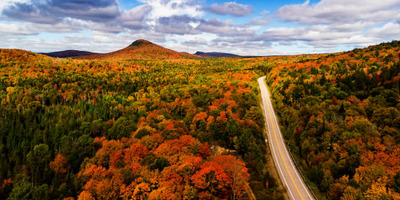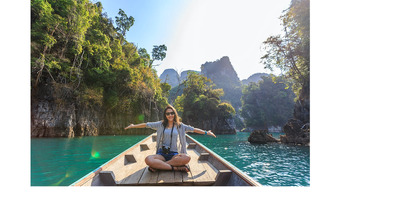Eco-friendly guide: How to make your next camping trip more sustainable
Eco-friendly guide: How to make your next camping trip more sustainable
Camping is an amazing outdoor activity fit for anyone who loves spending their free time surrounded by the beauty of nature. It is a great way to take a break from the stress and pressure of everyday life, and reconnect with Mother Nature.
While camping is a great way to show appreciation for the grandeur of the natural world, there are certain things you can do to make your stay as sustainable and eco-friendly as possible.
This article will teach you how to plan your trip in advance, and help minimize your impact on the environment.
Sustainable camping gear
To start off, no camping trip can take place without a tent. The shelter is the priority, so investing in a quality tent made from sustainable materials is a great option. However, these can be expensive, and some campers may not want these extra expenses.
For those campers who wish to avoid investing in expensive sustainable camping gear, one option is to borrow from someone else. Find a friend who has camping gear and ask to borrow it, but make sure you take care of anything you borrow as if it were your own. Alternatively, you could rent the great you need, as there are a lot of places that offer this service.
If you already have a tent, the most sustainable solution is to use what you have, even if it is not made of sustainable materials. If your tent needs repair, you can do it yourself. It is better to repair what you have than to spend money on buying new items.
When it comes to other gear, the rule is the same. Use what you have, and borrow if you don’t.
Sustainable hygiene
Now that your gear is packed, it is time to discuss hygiene. Good hygiene is always important, even when you're reconnecting with nature. While most hygiene products use chemicals that may have a negative impact on the environment, you still ought to use some of them in order to stay clean. However, you should try to pack products that are biodegradable and non-toxic. Take your time to read and research the ingredients of certain products to determine if they are suitable for your trip.
Take care where you dispose of your waste. Dig a hole in the ground away from the campsite and do your business in it, but always remember to fill it with dirt afterward.
For female hygiene, the best solution is to use a menstrual cup. It is reusable and won’t generate unnecessary waste. What’s more, you can clean them easily with water and soap, as well as sanitize them in water boiled over the campfire.
Sustainable meal preparation
You should always plan your meals in advance, whether you plan on cooking or not. For those who plan on testing their culinary skills while on the trip, make sure you know exactly what you’ll need, to avoid missing crucial ingredients. For those who don’t want to cook, it is best to pack your food in Tupperware or similar containers.
Make sure not to throw any packaging on the ground, and dispose of any leftovers properly. It is also a good idea to utilize reusable plates, cups, and eating utensils. Give them a good rinse once you’re done with your meal, and pack them with the rest of your cooking gear.
A good idea is to pack non-perishable foods and dry goods such as nuts and trail mix. Additionally, you could pack canned food such as beans or corn, since they won’t go bad and you can create many easy but hearty meals with them. Whichever food you choose to take, make sure there is little to no plastic packaging. If there is, make sure you dispose of it properly.
Fire Safety
Fire is essential on any camping trip, especially if you plan to cook your meals. One of the most important things is to practice proper fire safety.
An open flame can be very dangerous, especially in the dry summer months. One spark is all it could take to start a forest fire, and no one wants to deal with that. Forest fires are a massive environmental disaster that could potentially take the lives of not just the flora and fauna, but people as well. Some forest fires have resulted in complete deforestation and even became a serious safety hazard for anyone living close to the affected area. That is why it is essential to contain your fire and be mindful of it.
If the campsite has a determined fire pit, it is best to use that. However, if it does not have a determined fire pit, you have to build one yourself. To create a campfire that won’t threaten the well-being of you and the nature around you, there are a few things you should do.
First off, take a look at the campsite and determine where the perfect place for your fire is. It should be at a safe distance from your tent. Additionally, look up and see how high the branches of trees are. If they’re hanging low, you should not build a fire there as the heat may cause the leaves to catch fire from just a small spark.
Moreover, you should try to find some large rocks to build a ring around your fire, so that it can’t spread more than intended. Stack the rocks in a circle and build your fire inside of it. Use dry sticks and leaves to start your fire. Never cut branches off of trees to use in your fire, as that will damage the trees and the still-green branches won’t light up since they’re still full of water. Instead, walk around and gather firewood from the ground.
Lastly, never leave a fire unattended! If you want to go for a walk, first make sure the fire is put out. Even a small ember can burst into flames with the right wind movement. This is why you should let the fire die down before dousing it in water or covering the ashes with a layer of sand or wet soil.
Leave no trace
One of the most important sustainability principles is to leave no trace. Keeping your campsite neat and clean is a must for anyone who wants to minimize their impact on the environment. Don’t litter, and dispose of any waste properly.
If you’re camping on a designated camping ground, there should be a dumpster available for you to dispose of your garbage. However, if you’re camping in the wild and don’t have access to a dumpster, you should have some trash bags at hand. Hang the bag on a tree not too far away from your site, but not too close either. The smell of food and other trash can attract animals such as bears to your location. Once your trip is done and you’ve packed all your gear, take one last look and see if there’s anything you’ve left behind that should not be there. Take your trash bag with you, and throw it when you find a dumpster.
In addition, if you come across any garbage on your walks or hikes, take that with you too. You may not have been the one that left it there, but you can pick it up and dispose of it properly.
Final thoughts
The goal of any sustainable camping trip is to leave no trace. This guide will help point you in the right direction, but it is up to you to make sure you’re being as sustainable as possible. Clean your campsite so that it looks like you were never there.
By
Rea
More Vacations

Urban Lifestyle in Canada: Exploring Cities, Culture, and Entertainment
Urban life in Canada varies by city: Toronto is cosmopolitan, Montréal bohemian, and Vancouver blends city and nature. Let’s explore together the vibrant culture, food, art, and nightlife that make Canadian urban living dynamic and unique.

5 tips for travelling more sustainably
Sustainable travel is an approach to tourism that focuses on reducing travel's environmental and social impacts. Seeing the world is on the bucket list for millions of us, but at what cost? The ecological impact can be considerable, so learning how to mitigate this is vital.

5 Popular Activities Canadians Should Consider for Entertainment and Fun
Are you a Canadian tired of doing the same activities for fun over and over again? This piece reveals some exciting activities that do not require traveling abroad.

How To Make Your Vacation Even Better With Online Games
One great way to enjoy your vacation is by playing online games. Not only are they a great way to kill some time, but they can also be a lot of fun. Plus, there are now many different online games available, so you’re sure to find one you enjoy playing.

Top 5 Interesting Facts About Quebec
Quebec has a rich history, worth learning about. It's located in the eastern part of Canada, with its beautiful and historic city streets, captivating nature, and vast amounts of natural resources.

The best countries to visit for lone female travellers
Travelling alone is a true adventure. There’s something about being on your own that opens up your senses and makes you take note of every little detail, it’s as if you’re more 'there' when you’re alone in a new place.

Travel the World With International Study Programs
International study programs are great opportunities for you to travel to different parts of the world. There a several study programs that offer you the chance to travel abroad to learn for free or at a small cost.
